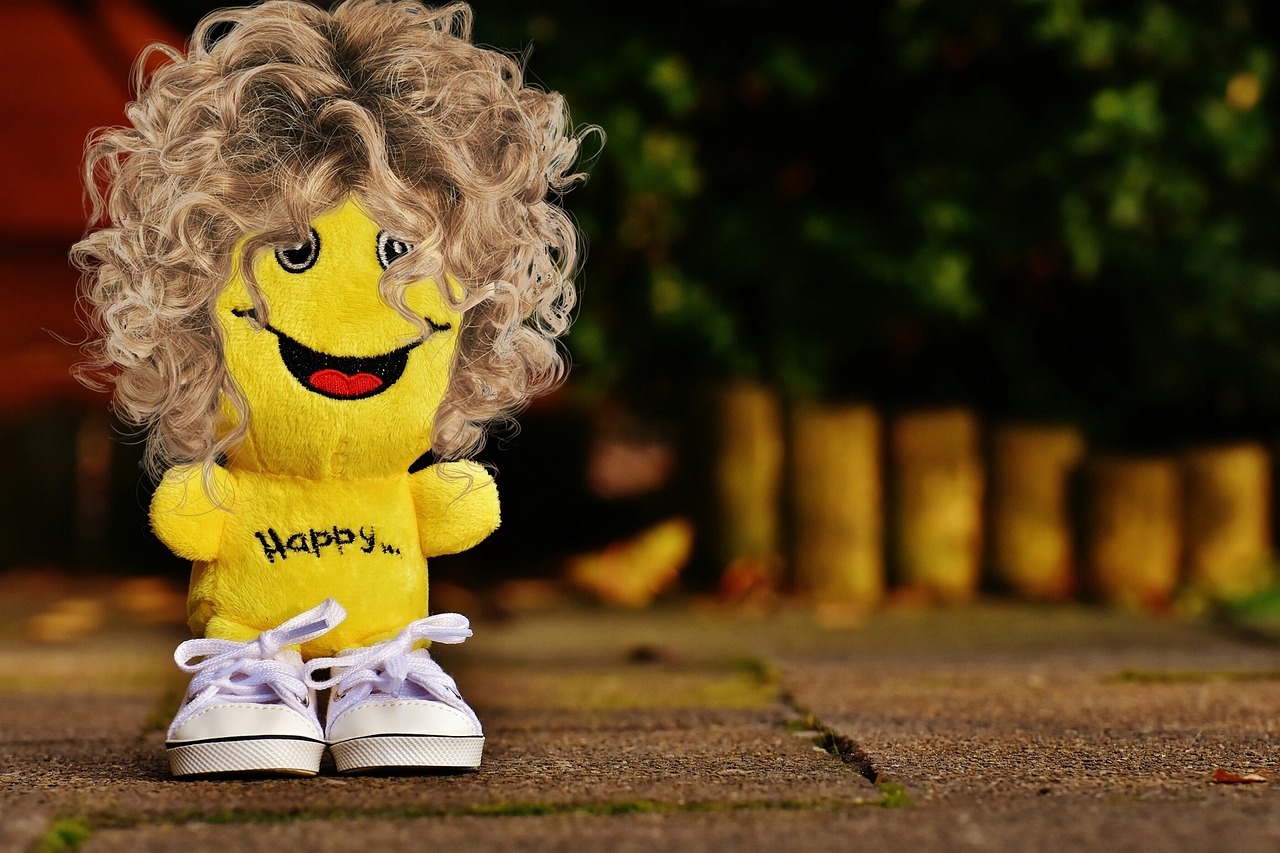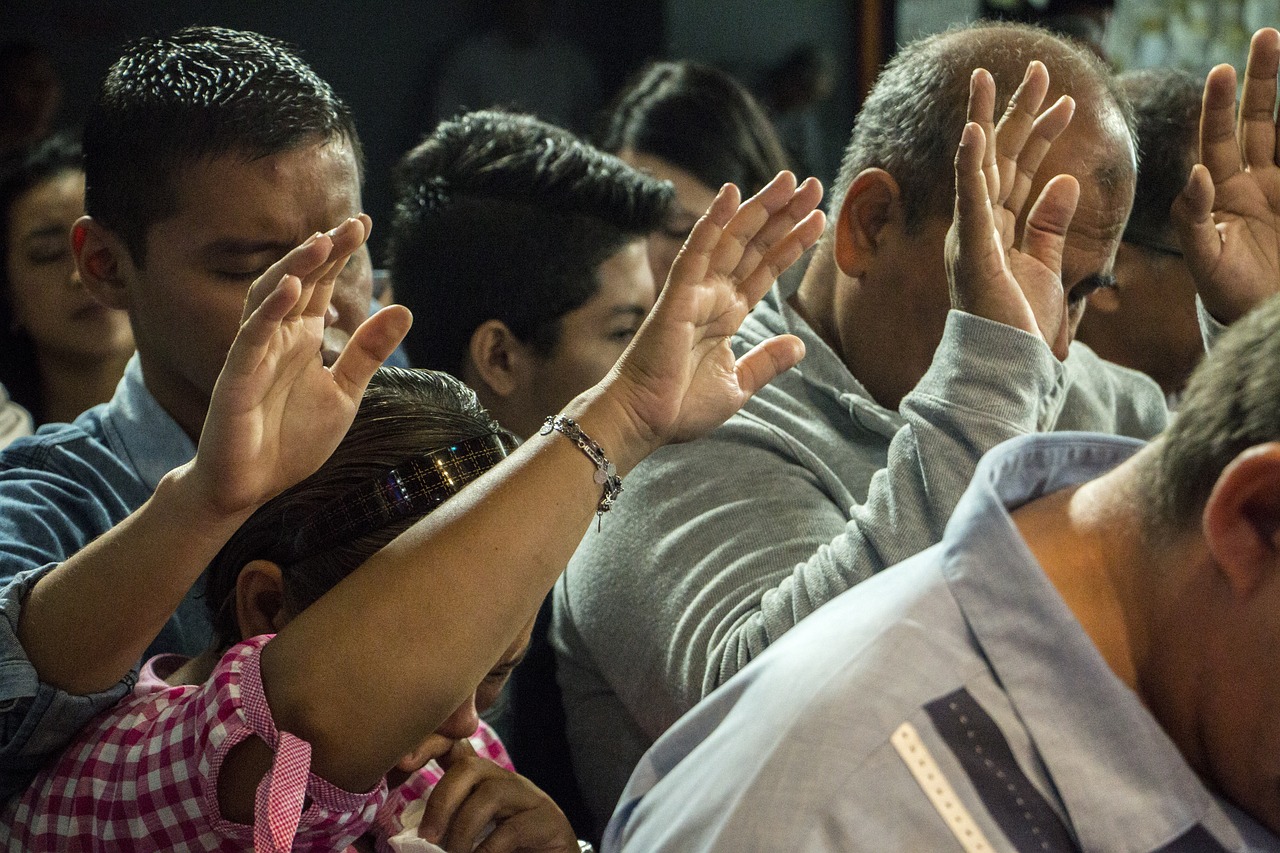The Role of Praise in Encouraging Good Behavior
Praise is a powerful tool that can shape behavior in profound ways, especially when it comes to children. It’s not just about saying “good job” or “well done” – it’s about understanding the impact of our words on a child's development and motivation. When we offer genuine and thoughtful praise, we’re not merely acknowledging an action; we’re instilling a sense of accomplishment and encouraging a positive mindset. Think of praise as a fertilizer for the mind – it nurtures growth, resilience, and a love for learning.
The significance of praise extends beyond mere recognition; it plays a crucial role in building self-esteem. When children receive praise, they begin to associate their efforts with positive outcomes. This connection can lead to a more motivated individual who is eager to take on challenges. Imagine a child learning to ride a bike. With every push of the pedal and every wobble, a parent’s encouraging words can make all the difference between fear and confidence. It’s this kind of feedback that helps children understand that mistakes are part of the learning process, not a reflection of their worth.
Moreover, the context in which praise is given can significantly affect its effectiveness. For instance, praising a child for their intelligence might feel good in the moment, but it can also create pressure to maintain that image. On the other hand, praising effort encourages a growth mindset, where children learn to value perseverance and resilience over innate ability. This distinction is crucial, as it shapes how children approach challenges throughout their lives. In this article, we will delve deeper into the psychology behind praise, explore its different types, and discuss how it can be effectively implemented in various settings to foster positive behavior.
Understanding the psychological principles that make praise effective can enhance its impact. When we praise a child, we are not just acknowledging their actions; we are also influencing their emotional development and shaping their future behaviors. Research shows that children who receive positive reinforcement tend to develop higher self-esteem and are more likely to engage in positive behaviors. This is because praise activates the brain’s reward system, releasing dopamine – the feel-good chemical that reinforces the behavior.
It’s fascinating to consider how praise can serve as a motivator. When a child feels recognized for their efforts, it creates an emotional connection that can lead to increased engagement and enthusiasm. This connection is especially vital during formative years when children are developing their identities and understanding their place in the world.
Not all praise is created equal. Understanding the different types of praise can help caregivers and educators choose the most effective approach. Broadly, praise can be categorized into two types: process-oriented and person-oriented. Each type has its unique effects on motivation and behavior.
Process-oriented praise focuses on the effort and strategies used by the individual. For example, praising a child for how hard they worked on a project or for the creative approach they took encourages a growth mindset. This method fosters resilience and a love for learning, as individuals learn to value their efforts over inherent talent.
Concrete examples of process-oriented praise can help caregivers and educators effectively implement this strategy. Specific phrases such as:
- "I really admire how much effort you put into that project!"
- "Your strategy for solving that puzzle was really clever!"
- "I can see how hard you worked to improve your reading skills!"
The benefits of process-oriented praise are numerous. It can lead to:
- Increased motivation to tackle new challenges
- Improved self-esteem and confidence
- A greater willingness to take risks and learn from mistakes
In contrast, person-oriented praise focuses on innate qualities, such as intelligence or talent. While this type of praise can boost confidence, it may inadvertently lead to a fixed mindset, where individuals believe their abilities are static and unchangeable. This can create pressure to maintain a certain image, which may discourage risk-taking and experimentation.
The role of praise in schools is crucial for fostering a positive learning environment. Teachers can effectively use praise to motivate students and enhance classroom behavior. By recognizing individual achievements and providing specific feedback, teachers can create a culture of praise that encourages students to strive for excellence.
Effective strategies for teachers include:
- Giving specific feedback that highlights effort and improvement
- Recognizing individual achievements in front of peers
- Creating opportunities for peer praise and encouragement
Praise has a profound impact on classroom dynamics. Positive reinforcement can improve student engagement, reduce behavioral issues, and promote a supportive learning atmosphere. When students feel valued and recognized, they are more likely to participate actively and collaborate with their peers. This creates a ripple effect, fostering a community of support and encouragement that benefits everyone.
Q: How does praise influence a child's self-esteem?
A: Praise reinforces a child's sense of accomplishment, which can significantly boost their self-esteem and confidence in their abilities.
Q: What is the difference between process-oriented and person-oriented praise?
A: Process-oriented praise focuses on effort and strategies, promoting a growth mindset, while person-oriented praise emphasizes innate qualities, which can lead to a fixed mindset.
Q: Can too much praise be harmful?
A: Yes, excessive praise, especially if not genuine, can create pressure and lead to anxiety about maintaining a certain image or standard.

The Psychology Behind Praise
Praise is not just a simple pat on the back; it’s a powerful tool that can shape behavior and emotional development, especially in children. Understanding the psychology behind praise can help us harness its full potential. When we praise someone, particularly a child, we are not only acknowledging their efforts or achievements but also influencing their self-perception and motivation. Think of praise as a seed planted in the fertile ground of a young mind—it can grow into a strong belief in one’s capabilities or, conversely, it can lead to self-doubt if not applied thoughtfully.
The impact of praise on behavior and emotional development is profound. Research shows that when children receive genuine praise, it can trigger the release of dopamine, the brain's feel-good chemical. This biochemical reaction not only makes them feel good in the moment but also reinforces the behavior that earned the praise. For instance, if a child is praised for completing their homework diligently, they are more likely to repeat that behavior in the future. It’s like giving them a little boost of confidence; they associate the positive feelings with the effort they put in.
However, the effectiveness of praise hinges on how it is delivered. Not all praise is created equal—there are nuances that can make a significant difference. For example, when praise is specific and focused on the process rather than the person, it leads to a more profound impact. This kind of praise encourages a growth mindset, where individuals learn to appreciate their efforts and the strategies they employed to achieve success. It’s akin to providing a roadmap for future endeavors, guiding them toward continuous improvement. In contrast, generic praise, such as simply saying "Good job!" can feel hollow and may not encourage the same level of engagement or motivation.
To illustrate the psychological effects of praise, consider the following table that summarizes the differences between process-oriented and person-oriented praise:
| Type of Praise | Description | Psychological Impact |
|---|---|---|
| Process-Oriented Praise | Focuses on effort and strategies used | Encourages resilience, growth mindset, and a love for learning |
| Person-Oriented Praise | Focuses on innate qualities like intelligence | Boosts confidence but may lead to fixed mindsets |
In essence, the psychology behind praise reveals that it is not merely about recognition; it is about fostering a sense of capability and resilience. When done right, praise can transform how individuals view themselves and their abilities. It creates a nurturing environment where they feel safe to take risks and learn from their mistakes. So, the next time you offer praise, remember its potential to shape not just behavior but the very essence of self-worth and motivation.
- What is the difference between process-oriented and person-oriented praise?
Process-oriented praise focuses on the effort and strategies used, while person-oriented praise emphasizes innate qualities like talent or intelligence. - How does praise influence a child's self-esteem?
When given appropriately, praise can significantly boost a child's self-esteem by reinforcing their belief in their abilities and encouraging them to take on challenges. - Can too much praise be harmful?
Yes, excessive or insincere praise can lead to a fixed mindset, where individuals may become reliant on external validation rather than developing intrinsic motivation.

Praise is a powerful tool that can shape behavior and self-perception, but it's important to recognize that not all praise carries the same weight. Understanding the different types of praise can help caregivers, educators, and parents effectively encourage positive behavior. Broadly speaking, praise can be categorized into two main types: process-oriented praise and person-oriented praise. Each type has its own unique effects on motivation and behavior, and knowing when to use each can make a significant difference in an individual's development.
Process-oriented praise emphasizes the effort, strategies, and processes that individuals employ to achieve a task. This type of praise is all about the journey rather than just the end result. For example, saying "You worked really hard on that project!" or "I can see you put a lot of thought into your solution!" not only acknowledges the effort but also encourages a growth mindset. This approach fosters resilience, as individuals learn to appreciate their efforts and the learning experiences that come from challenges. It’s like watering a plant; when you focus on nurturing the roots (the effort), the plant (the individual) grows stronger and more vibrant.
On the flip side, we have person-oriented praise, which focuses on innate qualities such as intelligence or talent. Statements like "You're so smart!" or "You're a natural at this!" can boost confidence in the short term. However, this type of praise can inadvertently lead to a fixed mindset, where individuals may start to believe their abilities are set in stone. Think of it like a trophy; while it might look great on the shelf, it doesn’t encourage ongoing growth or improvement. Instead, it can create a fear of failure because if they are praised for being "smart," they may avoid challenging tasks to maintain that label.
To illustrate the differences, consider the following table that summarizes the key aspects of each type of praise:
| Type of Praise | Focus | Impact on Mindset | Example |
|---|---|---|---|
| Process-oriented | Effort and strategies | Encourages a growth mindset | "You did a great job figuring that out!" |
| Person-oriented | Innate qualities | Can lead to a fixed mindset | "You're so talented at this!" |
In summary, understanding the types of praise is crucial for fostering a positive environment that encourages growth and resilience. By focusing on the process rather than the person, we can help individuals develop a love for learning and a willingness to take on challenges. As caregivers and educators, we hold the power to shape the way praise is delivered, and by doing so, we can significantly influence the development of self-esteem and motivation in those we guide.
When we think about praise, it’s easy to get caught up in the idea of simply telling someone they did a great job. However, process-oriented praise takes it a step further by emphasizing the effort and strategies that led to success rather than just the outcome. This type of praise is like a compass for a traveler; it guides individuals to focus on the journey of learning rather than just the destination. By highlighting the processes involved, we can nurture a growth mindset, encouraging individuals, especially children, to embrace challenges and view failures as learning opportunities.
Imagine a child who just completed a challenging puzzle. Instead of saying, “You’re so smart!” which can lead to a fixed mindset where they may fear failure, a more effective approach would be to say, “I really admire how you kept trying different pieces until they fit!” This kind of feedback not only celebrates the achievement but also reinforces the value of persistence and problem-solving skills. It’s like planting seeds of resilience that will grow into a robust attitude toward learning.
Research has shown that when praise focuses on effort, it significantly impacts motivation and self-esteem. Children who receive process-oriented praise are more likely to take on new challenges and persist in the face of difficulties. They learn to value their efforts, which fosters a love for learning that can last a lifetime. In contrast, children who receive person-oriented praise may become overly reliant on external validation, leading to anxiety when faced with challenges.
Here are some effective ways to implement process-oriented praise:
- Be Specific: Instead of vague compliments, provide detailed feedback on what the individual did well.
- Encourage Reflection: Ask questions that prompt individuals to think about their strategies and efforts.
- Celebrate Efforts: Acknowledge the hard work that went into achieving a goal, regardless of the outcome.
By incorporating these strategies into our interactions, we can create a supportive environment that encourages growth and resilience. In educational settings, for instance, teachers who practice process-oriented praise can cultivate a classroom culture where students feel safe to take risks and learn from their mistakes. This not only enhances academic performance but also contributes to the overall emotional well-being of students.
In summary, process-oriented praise is a powerful tool for encouraging positive behavior and fostering a love for learning. It shifts the focus from innate abilities to the value of hard work and perseverance, helping individuals develop a mindset that embraces challenges as opportunities for growth.
When it comes to encouraging good behavior and fostering a growth mindset, the words we choose matter immensely. Process-oriented praise focuses on the effort, strategies, and progress made by individuals rather than labeling them with fixed traits. Here are some effective examples of how to implement this approach:
Imagine a child who has just completed a challenging puzzle. Instead of saying, “You’re so smart!” which is person-oriented praise, you could say, “I’m really impressed by how you tried different pieces until you found the right fit!” This not only acknowledges their effort but also reinforces the idea that perseverance is key to success.
Another scenario might involve a student struggling with a math problem. Instead of saying, “You’re a natural at math,” consider saying, “I love how you approached that problem! You really thought through the steps.” This kind of feedback encourages them to value their problem-solving process, making them more likely to tackle similar challenges in the future.
Here are some more phrases that exemplify process-oriented praise:
- "You worked really hard on that project, and it shows!"
- "I can see that you put a lot of thought into your presentation."
- "You didn’t give up, even when it got tough. That’s impressive!"
- "Your creativity in solving that problem is fantastic!"
These examples illustrate how specific feedback can shape behavior positively. By emphasizing effort and strategies, we create an environment where individuals feel motivated to take risks and embrace challenges. This kind of encouragement not only boosts their self-esteem but also cultivates a lifelong love for learning.
In educational settings, teachers can further enhance this approach by incorporating process-oriented praise into their daily interactions with students. For instance, during group activities, a teacher might say, “I appreciate how you all collaborated to come up with that solution. It’s great to see teamwork in action!” This not only acknowledges the group's effort but also promotes a culture of cooperation and support.
In summary, using process-oriented praise effectively can lead to a more resilient, motivated, and engaged individual. By recognizing the journey rather than just the outcome, we empower others to value their efforts, enhancing their learning experiences and personal growth.
Q: What is the difference between process-oriented and person-oriented praise?
A: Process-oriented praise focuses on the effort and strategies used to achieve a task, encouraging a growth mindset. In contrast, person-oriented praise emphasizes innate qualities, which can lead to a fixed mindset.
Q: How can I incorporate process-oriented praise in my daily interactions?
A: You can incorporate process-oriented praise by acknowledging the specific efforts and strategies someone used rather than just their inherent abilities. Use phrases that highlight their hard work and creativity.
Q: Why is process-oriented praise important for children?
A: It helps children develop resilience, a love for learning, and a willingness to face challenges. By valuing effort over results, children learn that they can improve through hard work and perseverance.
Process-oriented praise is a game changer when it comes to nurturing positive behavior and fostering a love for learning. Unlike person-oriented praise, which often focuses on innate traits, process-oriented praise emphasizes effort, strategies, and the journey of learning itself. This approach has a multitude of benefits that can significantly enhance an individual's motivation and self-esteem.
One of the primary benefits of process-oriented praise is its ability to cultivate a growth mindset. When individuals receive praise for their hard work and perseverance, they begin to understand that their abilities can improve over time with effort and practice. This realization encourages them to embrace challenges rather than shy away from them. Think of it like planting a seed; with the right nurturing, it can grow into a strong tree, symbolizing resilience and adaptability.
Moreover, process-oriented praise can lead to increased motivation. When individuals feel recognized for their efforts, they are more likely to engage in tasks with enthusiasm. For example, a child who hears, "I am so proud of how hard you worked on that project!" is likely to feel motivated to tackle future challenges, knowing that their efforts will be acknowledged. This creates a positive feedback loop where effort begets more effort, leading to continuous improvement.
Additionally, this type of praise can significantly boost self-esteem. When individuals are praised for their processes, they learn to value their contributions and recognize their own capabilities. This is especially important for children, as their self-image is still developing. By focusing on the effort rather than the outcome, we help them build a solid foundation of self-worth that is not solely dependent on their achievements. It's like giving them a sturdy backpack filled with tools for their educational journey, equipping them to face various academic challenges.
Another key benefit is that process-oriented praise encourages risk-taking. When individuals know they will be praised for their efforts, they are more likely to step outside their comfort zones and try new things. This is crucial in learning environments where innovation and creativity are valued. For instance, in a classroom setting, a student who feels safe to experiment with new ideas, knowing they will be recognized for their effort, is likely to produce more original and creative work.
To summarize, the benefits of process-oriented praise include:
- Fostering a growth mindset that encourages resilience.
- Increasing motivation by recognizing effort.
- Boosting self-esteem through value recognition.
- Encouraging risk-taking and creativity.
In essence, process-oriented praise serves as a powerful tool for shaping positive behavior and encouraging a lifelong love of learning. By focusing on the journey rather than just the destination, we not only help individuals grow academically but also equip them with the emotional tools necessary to navigate life's challenges with confidence.
Q1: What is process-oriented praise?
A1: Process-oriented praise focuses on the effort, strategies, and processes individuals use to achieve their goals, rather than simply praising their innate qualities or outcomes.
Q2: How can I implement process-oriented praise in my interactions?
A2: You can implement process-oriented praise by recognizing specific efforts and strategies. For example, instead of saying “You’re so smart,” you might say, “I really appreciate how much time you spent researching that topic.”
Q3: What are the long-term effects of process-oriented praise?
A3: Long-term effects include enhanced resilience, a stronger growth mindset, increased motivation, improved self-esteem, and a greater willingness to take on challenges.
Q4: Can process-oriented praise be applied in educational settings?
A4: Absolutely! Teachers can use process-oriented praise to create a supportive learning environment that encourages students to take risks and engage deeply with their learning.
When we talk about person-oriented praise, we’re diving into a realm that focuses on recognizing innate qualities. Think of it as giving a high-five for being “smart” or “talented.” While this type of praise can certainly give a temporary boost to confidence, it’s crucial to understand the broader implications. For instance, when children hear phrases like “You’re so intelligent!” or “You’re a natural at this!” they may feel a rush of pride in the moment. However, this kind of affirmation can unintentionally lead to a fixed mindset.
Why is that, you ask? Well, when individuals start to believe that their abilities are set in stone, they may shy away from challenges. After all, if they’re already labeled as “smart,” why risk failure by trying something new? It’s as if they’re walking a tightrope, afraid to take a step off for fear of falling. This fear can stifle creativity and limit personal growth, making it essential for caregivers and educators to tread carefully when using this form of praise.
Moreover, while person-oriented praise can foster a sense of identity and belonging, it can also create undue pressure. Children might feel they need to constantly prove their worth, leading to anxiety and stress. Instead of focusing on the joy of learning, they might become fixated on maintaining their “smart” status. This brings us to an important point: while it’s great to celebrate achievements, it’s equally vital to ensure that praise doesn’t become a double-edged sword.
So, how can we balance person-oriented praise with more constructive forms? One effective strategy is to combine it with process-oriented praise. For example, instead of simply saying, “You’re so talented at drawing,” you could say, “I really love how you blended those colors in your drawing! It shows your effort and creativity.” This way, you’re still acknowledging their abilities but also emphasizing the hard work that went into it. This combination can help cultivate a more flexible mindset, encouraging children to embrace challenges rather than fear them.
To summarize, while person-oriented praise can uplift and motivate, it’s important to be mindful of its potential pitfalls. By blending this type of praise with a focus on effort and growth, we can help individuals build a more resilient and adaptive mindset. This not only enhances their self-esteem but also encourages a lifelong love for learning. After all, isn’t that what we truly want for the next generation?

Praise plays a pivotal role in shaping the educational landscape, acting as a catalyst for motivation and engagement among students. In the classroom, where the environment can sometimes feel daunting, a few well-placed words of encouragement can make all the difference. Imagine walking into a room filled with eager learners, each one waiting for that moment of recognition that validates their effort and boosts their confidence. When teachers utilize praise effectively, they not only reinforce positive behavior but also create a culture of support and enthusiasm for learning.
In educational settings, the way praise is delivered can significantly influence student outcomes. For instance, teachers who provide specific and genuine feedback tend to foster a more positive learning atmosphere. Rather than offering generic compliments like "Good job!" or "You're smart!", educators can opt for targeted praise that highlights the effort and strategies students employed to achieve their results. This approach not only makes the praise more meaningful but also encourages students to reflect on their learning process.
Consider the following strategies that can enhance the use of praise in the classroom:
- Be Specific: Instead of vague compliments, specify what the student did well. For example, "I love how you used different strategies to solve that math problem!"
- Encourage Peer Recognition: Create opportunities for students to praise each other, fostering a sense of community and support.
- Celebrate Efforts, Not Just Outcomes: Acknowledge the hard work put into a project, regardless of the final result. This promotes resilience and a growth mindset.
The impact of praise in educational settings extends beyond individual students; it can transform the entire classroom dynamic. When teachers consistently recognize and celebrate students’ achievements, it cultivates an environment where learners feel valued and empowered. This positive reinforcement can lead to increased student engagement, reduced behavioral issues, and a greater willingness to participate in class discussions and activities.
Moreover, the relationship between teachers and students can be significantly strengthened through the strategic use of praise. When students feel appreciated, they are more likely to trust their educators and engage in the learning process. This trust can lead to a more collaborative classroom atmosphere, where students feel safe to express their ideas and take risks in their learning.
In summary, the role of praise in educational settings cannot be overstated. It serves as a powerful tool for motivating students, enhancing their self-esteem, and fostering a supportive learning environment. By adopting effective praise strategies, educators can unlock the potential within each student, encouraging them to strive for excellence and embrace the joys of learning.
Q: How can I incorporate praise in my teaching without sounding repetitive?
A: Vary your praise by focusing on different aspects of student work, such as creativity, effort, or improvement. Using specific language can also help keep your feedback fresh and engaging.
Q: Is there such a thing as too much praise?
A: Yes, excessive praise can lead to students becoming dependent on external validation. It's important to balance praise with constructive feedback to encourage self-reflection and intrinsic motivation.
Q: How can I encourage students to praise each other?
A: Create structured activities where students can give feedback on each other's work, such as peer reviews or group projects. This not only promotes a positive atmosphere but also helps students develop critical thinking skills.
When it comes to fostering a positive learning environment, teachers hold a powerful tool in their hands: praise. But how can educators effectively harness this tool to motivate students and enhance classroom behavior? Well, it all starts with being intentional about the type of praise given. To create a culture of recognition, teachers can adopt several strategies that not only uplift students but also cultivate a thriving classroom atmosphere.
First and foremost, specific feedback is crucial. Instead of offering generic compliments like "Good job!" or "You're so smart!", teachers should focus on what the student did well. For instance, saying "I really appreciate how you collaborated with your classmates during the group project" not only acknowledges the student's behavior but also reinforces the importance of teamwork. This type of specificity helps students understand exactly what actions are valued, encouraging them to repeat those behaviors in the future.
Another effective strategy is to recognize individual achievements, no matter how small. Celebrating milestones, such as mastering a new concept or improving in a particular area, can significantly boost a student's confidence. Teachers can create a recognition board in the classroom where students’ achievements are displayed, fostering a sense of pride and motivation among peers. This visual representation of success can inspire others to strive for their own accomplishments.
Moreover, integrating praise into daily routines can make a significant impact. For example, starting each class with a moment of recognition for students who demonstrated good behavior the previous day can set a positive tone. Teachers might say, "I want to give a shout-out to Jessica for helping her classmate during math yesterday!" This not only encourages Jessica but also models positive behavior for other students. It creates an environment where everyone feels seen and valued.
In addition, teachers should be mindful of the timing of their praise. Immediate recognition of good behavior can reinforce the connection between the action and the acknowledgment. For instance, if a student raises their hand to answer a question, a quick "Great job raising your hand, Alex!" can encourage that behavior in the future. This immediate feedback loop is essential for reinforcing desired actions.
Lastly, it's important for teachers to foster a growth mindset through their praise. By emphasizing effort and perseverance, rather than just outcomes, educators can help students understand that learning is a journey filled with challenges. They can say things like, "I can see you really worked hard on this project; your effort is paying off!" This approach not only motivates students to keep trying but also instills resilience, teaching them that setbacks are just stepping stones to success.
In summary, by incorporating these strategies—specific feedback, recognizing individual achievements, integrating praise into daily routines, timely acknowledgment, and fostering a growth mindset—teachers can create a vibrant classroom culture that encourages good behavior and motivates students to excel. After all, when students feel appreciated and recognized, they are more likely to engage actively in their learning journey.
- Why is praise important in education?
Praise is crucial as it boosts students' self-esteem, motivates them to engage in learning, and reinforces positive behaviors. - What is the difference between process-oriented and person-oriented praise?
Process-oriented praise focuses on effort and strategies, promoting a growth mindset, while person-oriented praise emphasizes innate qualities, which can lead to fixed mindsets. - How can teachers effectively use praise in the classroom?
Teachers can use specific feedback, recognize individual achievements, integrate praise into daily routines, provide timely acknowledgment, and foster a growth mindset.
When we think about the classroom environment, it’s essential to recognize the profound impact that praise can have on the dynamics among students and between students and teachers. Imagine a classroom where students feel valued and recognized for their efforts; it’s like a garden where flowers bloom in abundance when nurtured with care. Praise acts as that nurturing element, fostering a sense of belonging and encouraging students to engage more fully with their learning.
Research shows that when teachers consistently use praise, it not only boosts student motivation but also creates an atmosphere of collaboration and support. This is particularly important in a diverse classroom setting where different learning styles and paces can create challenges. By acknowledging each student's unique contributions, teachers can cultivate an environment where every child feels empowered to participate. For instance, when a teacher praises a student for their innovative approach to a problem, it can inspire others to think outside the box as well. This ripple effect can transform the classroom into a hub of creativity and enthusiasm.
Furthermore, the use of praise can significantly reduce behavioral issues within the classroom. When students feel recognized and appreciated, they are less likely to seek attention through disruptive behavior. Instead, they channel their energy into positive actions. Consider this: a classroom where students are celebrated for their achievements—big or small—creates a culture of respect and camaraderie. In such an environment, students are more likely to support one another, leading to improved peer relationships and a stronger classroom community.
To illustrate the impact of praise on classroom dynamics, let’s take a look at the following table, which summarizes key benefits of praise in educational settings:
| Benefit | Description |
|---|---|
| Increased Engagement | Praise encourages students to participate actively in discussions and activities. |
| Reduced Behavioral Issues | Students are less likely to act out when they feel valued and recognized. |
| Enhanced Collaboration | Praise fosters a supportive atmosphere where students work together effectively. |
| Improved Self-Esteem | Regular recognition boosts students' confidence and encourages them to take risks. |
In conclusion, the impact of praise on classroom dynamics cannot be overstated. It not only enhances individual motivation but also strengthens the overall classroom community. As educators, when we harness the power of praise effectively, we create an environment where students are excited to learn, collaborate, and grow. Let’s remember that a little recognition can go a long way in shaping the future leaders of tomorrow.
Frequently Asked Questions
- How can teachers effectively implement praise in the classroom?
Teachers can implement praise by being specific about what they are praising, focusing on effort rather than inherent ability, and ensuring that praise is sincere and timely. - What are the potential downsides of using praise?
If used excessively or insincerely, praise can lead to a sense of entitlement or dependency on external validation. It’s crucial to balance praise with constructive feedback. - Can praise improve student relationships?
Yes! When students feel recognized, they are more likely to support their peers, fostering a collaborative and friendly classroom environment.
Frequently Asked Questions
- What is the importance of praise in encouraging good behavior?
Praise plays a crucial role in reinforcing positive behavior, especially in children. It helps them feel recognized and valued, which boosts their self-esteem and motivates them to repeat the desired behaviors. When individuals receive praise, they are more likely to associate their actions with positive outcomes, leading to a cycle of good behavior.
- How does process-oriented praise differ from person-oriented praise?
Process-oriented praise focuses on the effort and strategies used to achieve a task, promoting a growth mindset. In contrast, person-oriented praise emphasizes innate qualities like intelligence or talent. While both can be beneficial, process-oriented praise encourages resilience and a love for learning, whereas person-oriented praise may lead to a fixed mindset, where individuals believe their abilities are set in stone.
- Can you provide examples of process-oriented praise?
Absolutely! Here are a few examples of process-oriented praise: "I really admire how hard you worked on that project!" or "You did a fantastic job figuring out that problem on your own!" These types of phrases highlight the effort and strategies used, reinforcing the value of hard work and perseverance.
- What are the benefits of using process-oriented praise?
Using process-oriented praise can lead to numerous benefits, including increased motivation, improved self-esteem, and a greater willingness to take on challenges. When individuals feel that their efforts are recognized, they are more likely to engage in tasks and develop a positive attitude towards learning and growth.
- How can teachers effectively use praise in the classroom?
Teachers can use praise effectively by providing specific feedback and recognizing individual achievements. For instance, instead of saying "Great job!", a teacher might say, "I loved how you explained your reasoning in that math problem!" This specificity helps students understand what they did well and encourages them to continue putting in effort.
- What impact does praise have on classroom dynamics?
Praise can significantly improve classroom dynamics by enhancing student engagement and reducing behavioral issues. When students feel appreciated and recognized for their efforts, they are more likely to participate actively and support one another, fostering a positive and collaborative learning environment.



















